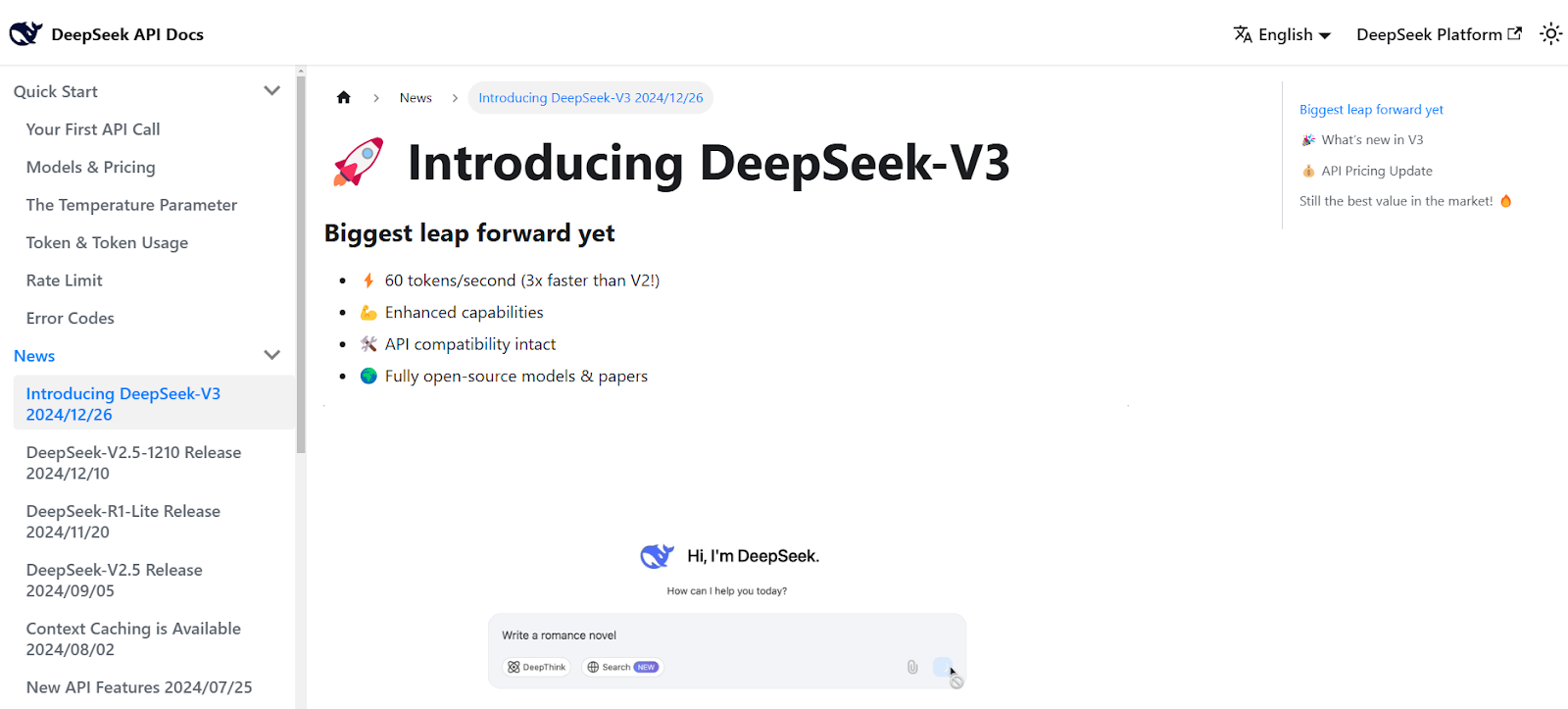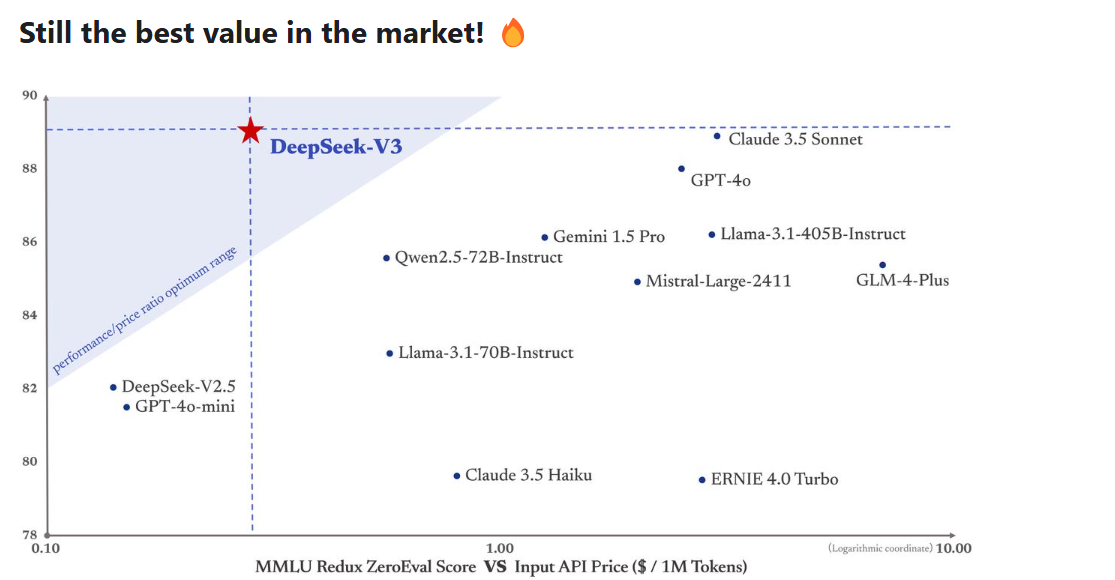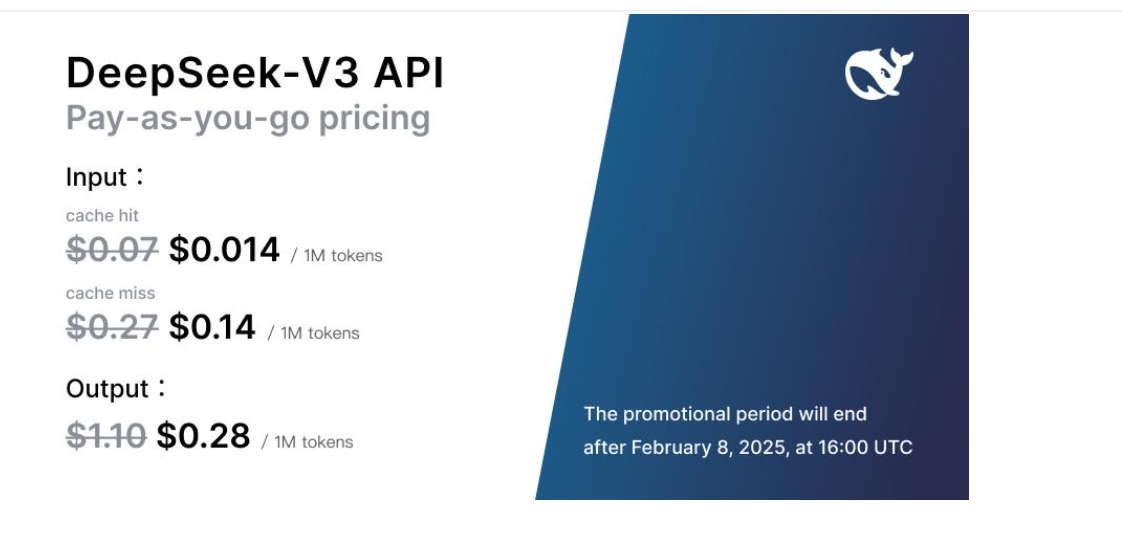Discover a new and groundbreaking AI model with 671 billion parameters, offering users improved coding and text generation capabilities. Learn more about its unique architecture that reduces costs while outperforming other open-source AI models across significant benchmarks.
DeepSeek, a Chinese AI developer, introduced DeepSeek-V3 (as what appears to be one of the most advanced AI models) with 671 billion parameters, under a permissive license, allowing developers to download, use, and modify it for commercial uses and other applications.
What DeepSeek-V3 Can Do

The large language model (LLM) can perform various tasks, such as creating software codes and generating texts. The developer claims it can also outperform two other advanced open-source LLMs across over half a dozen benchmark tests.
Based on a combination of "mixture of experts” (MoE) architecture, it comprises multiple neural networks - each being optimized to perform a different set of tasks. It’s unique in the sense that it works with a router, which sends the user’s request to a specific neural network that can best answer the prompt.
Its architecture can reduce hardware costs, limiting the amount of infrastructure to run, because each request is routed straight to a particular neural network to handle a request instead of activating the entire LLM. Each neural network comprises 34 billion parameters.
What’s New in DeepSeek-V3?
-
Improved capabilities
-
3x faster than V2 @ 60 tokens/second
-
Fully open-source models & papers
-
API compatibility intact
-
37B activated parameters
-
671B MoE parameters
-
Trained on 14.8T high-quality tokens
SOURCE: APIDocs DeepSeek News

However, DeekSeek- V3 has its fair share of downsides. For instance, some of the model’s neural networks receive a higher amount of training data compared to the others. This can result in output quality inconsistencies, as you can imagine. The developer says it’s developed ways to address this issue and that it’s implemented it in V3.
Pricing
 The new powerful model was trained on 14.8 trillion worth of high-quality information tokens, with one token corresponding to a few numbers or letters.
The new powerful model was trained on 14.8 trillion worth of high-quality information tokens, with one token corresponding to a few numbers or letters.
In training, it used only a little infrastructure - 2.788 million graphics processing unit (GPU) hours.
[Data Science: A token is used to represent bits of raw data with one million tokens equivalent to about 750,000 words.]
DeepSeek-V3 also presents better output quality, thanks to several optimizations it was designed with. It uses ‘attention,’ a technique to identify a sentence’s most important details.
The AI implements multi-head latent attention, allowing it to extract the primary details from a text snippet a couple of times to ensure it reduces the likelihood of missing essential information.
In addition, the LLM features multi-token prediction compared to most language models, which generate text with only one token at a time, allowing it to make quicker inferences.
The developer tested and compared it to three other open-source LLMs - Qwen2.5 72B, Llama 3.1 405B, and DeepSeek-V2, with V3 achieving higher scores across nine benchmarks, including math and coding used in the evaluation, while also performing well at a range of text processing.
Useful Resources



